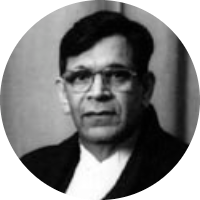Y.K. Sabharwal

Y.K. Sabharwal
Former Chief Justice of India
Assumed Office1st Nov, 2005
Retired On13th Jan, 2007
Previously
Judge of the Supreme Court 28th January 2000 - November 1st 2005
Chief Justice of the Bombay High Court February 3rd 1999 - January 27th 2000
Permanent Judge of the Delhi High Court April 29th 1987 - February 2nd 1999
Additional Judge of the Delhi High CourtNovember 17th 1986 - April 28th 1987
Profile
Justice Yogesh Kumar Sabharwal practised as an Advocate for the Indian Railways and later as the Advocate for the Delhi Administration from 1973 to 1977. He was the Additional Standing Counsel for the Delhi Administration, and later became the Standing Counsel in 1980. He held various positions in the Bar Council and Bar Associations. He was the Secretary and later President of the Delhi High Court Bar Association; a member of the Bar Council of India as a representative of Delhi.
In 1986 he became the Additional Judge of the Delhi High Court, and in 1987 he became the Permanent Judge. He was later appointed as the Chief Justice of the Bombay High Court in 1999. On January 28th 2000, he was appointed as a Supreme Court Judge. He succeeded Justice R.C. Lahoti as the Chief Justice of India in November 2005. He retired 14 months later, in January 2007.
During his seven-year term at the Supreme Court, he authored 175 Judgements and was a part of 630 benches.
Justice Y.K Sabharwal mostly worked on cases about Criminal and Service matters. He is also known for his judgements on Constitutional Law and Civil matters.
Notable Judgments
In Rameshwar Prasad And Others v. Union of India, Justice Sabharwal authored the judgement stating that the dissolution of the Bihar Assembly was unconstitutional. He wrote that if a political party with the support of another can form a government with a majority, the Governor cannot refuse the formation of said government based on a subjective assessment. Article 356 does not apply to illegal activity by a State Government which holds the majority, making the dissolution of the Bihar Parliament illegal and unconstitutional.
The nine-judge Bench presided by Justice Y.K. Sabharwal in I.R. Coelho (dead) by L.Rs. v. State of Tamil Nadu unanimously upheld the Basic Structure Doctrine of the Constitution. The Court held that Judicial Review is a component of Basic Structure Doctrine. The blanket immunity given under the Ninth Schedule was no longer applicable after Kesavananda Bharti Sripadagalvaru v. the State of Kerala. Even if an Act is put under the ninth schedule, if its provisions contravened the basic structure it would be open to attack. This was an important case in establishing that any constitutional amendment that violated the basic structure of the constitution is invalid and can be struck down.
The two-judge Bench comprising Justice Y.K. Sabharwal and Justice H.K. Sema in Onkar Lal Bajaj Etc. Etc vs Union Of India held that a State action had to take into account public interest. Further, the judgement authored by Justice Sabharwal stated that ‘public interest’ cannot be exhaustively defined and that it takes on different forms, depending on each circumstance.
He was also involved in several high profile cases, including P.V. Narasimha Rao vs State(Cbi/Spe) (also called the JMM Bribery Case) where the Court held that members of the Parliament and State legislatures are public servants who can be prosecuted under the Prevention of Corruption Act, 1988. However, sections 7, 10, 11 and 13 did not apply to said public servants due to the lack of a competent authority to impose sanctions.
In M.C. Mehta vs. Union of India, the Bench consisting of Y.K. Sabharwal, B.N.Srikrishna, R.V. Raveendran stated that illegal use of property can attract sanctions such as sealing. The Court stated that misuse of property does not fall under the definition of development.
In 2015 Justice Sabharwal passed away due to a heart attack at age 73.
